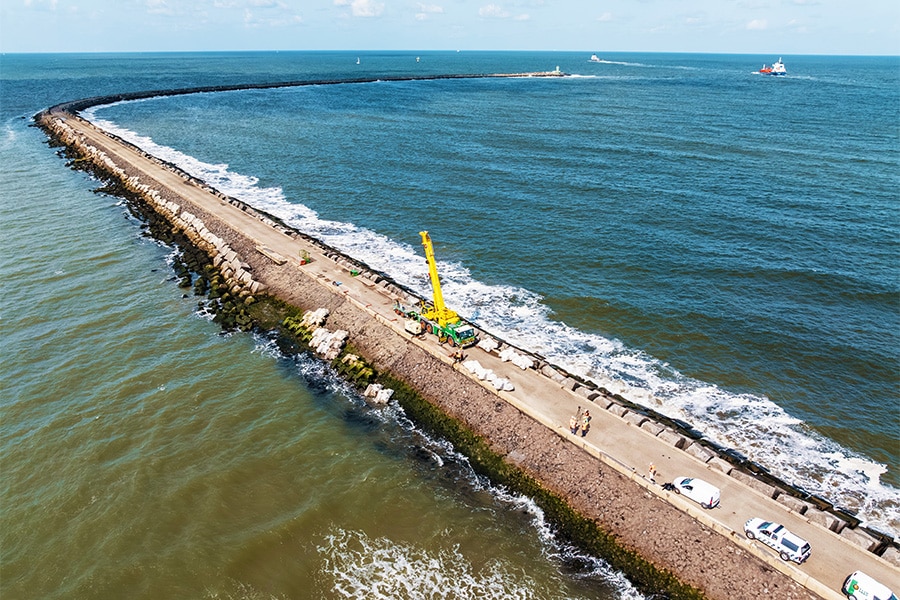
'Green' concrete with ground blast furnace slag
Greening the construction column is an important issue. One of the most commonly used building materials is concrete. Concrete "an sich" is not environmentally unfriendly, but it is the Portland cement that has a high carbon footprint. By partially replacing the cement with ground blast furnace slag, the carbon footprint of concrete goes down by leaps and bounds. An interview with Jeroen Langenberg, commercial director at Ecocem Benelux, producer of this cement substitute, who sees room for further sustainability.
Ground blast furnace slag is widely used in the Netherlands and Belgium, Langenberg begins. "We have been producing the cement substitute for twenty years from granulated blast furnace slag, which we grind into a fine binder and finds its way into the concrete mortar and precast concrete industry. By applying the binder in the concrete mix in the ratio 80:20, i.e. 80% ground blast furnace slag and 20% Portland cement, gigantic CO2 savings are achieved. But there is always room to make it even more sustainable," says Langenberg.

Geol polymer concrete
So when one thinks of greening concrete, one automatically thinks of Ecocem and the use of ground blast furnace slag, a product released in the making of pig iron at Tata Steel in IJmuiden, among others. "But there are also limits to the use of the sustainable binder," Langenberg acknowledges. "It is still up to the cement industry to ensure that concrete becomes more sustainable. There is not nearly enough blast furnace slag available to replace all Portland cement. Moreover, the production of Portland cement itself releases an awful lot of CO2. This is also why the cement industry has advanced to come up with solutions. Fortunately, there are also firms developing concrete without Portland cement. Geopolymer concrete, for example, is a type of concrete with a clinker-free binder. Ground blast furnace slag can be an element in this."

2 million tons
Ecocem produces ground blast furnace slag in four plants, one in the Netherlands, one in Ireland and two in France. Langenberg does not rule out future expansion. "It is a proven method to make concrete more sustainable. In the Netherlands and Belgium we are already quite advanced in this, but in other countries there is still much to be achieved. With our four plants, we put more than 2 million tons of ground blast furnace slag on the market every year. The use of ground blast furnace slag leads to substantial CO2 savings. With Ecocem Innovations, we are continuously working on further optimizing the binder and developing new innovations to achieve sustainability in the chain. The research center is located just outside Paris and closely affiliated with the university there. Recently, for example, eco2floor was created, a sustainable screed based on ground blast furnace slag, as well as certain recipes to make tile adhesives more sustainable."
Accordingly, Langenberg sees the future looking bright. "Under the credo Innovation Powering Sustainability, we are building a sustainable construction column together. Innovation and thinking out of the box are essential in this."



